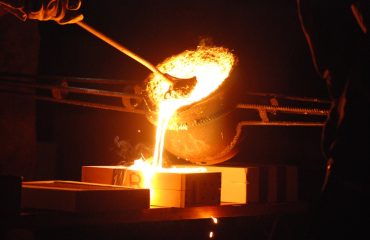Steel, a ubiquitous material in modern construction, demands specialized knowledge for safe and efficient design and implementation. This post provides a detailed overview of the essential steel training required for civil engineers, covering key aspects from fundamental principles to advanced software applications.
Understanding Steel Design Principles
A strong foundation in steel design principles is crucial. This includes a deep understanding of material properties like yield strength, ultimate tensile strength, and modulus of elasticity. Civil engineers need to be proficient in applying relevant design codes, such as the American Institute of Steel Construction (AISC) specifications or Eurocodes, to ensure structures meet safety standards. This involves selecting appropriate steel grades based on project requirements, considering factors like load capacity, deflection limits, and stability criteria. Furthermore, understanding the behavior of steel under various loading conditions, including tension, compression, bending, and shear, is paramount for accurate design.
Mastering Steel Detailing Techniques
Steel detailing is the process of creating precise drawings and specifications for fabricating and erecting steel structures. This is a critical aspect of steel construction, as inaccuracies can lead to significant delays, cost overruns, and safety hazards. Effective steel detailing requires a thorough understanding of structural drawings, fabrication techniques, and welding procedures. Civil engineers involved in steel design must be able to communicate effectively with detailers, ensuring that the design intent is accurately translated into shop drawings. Proficiency in detailing software, such as Tekla Structures or AutoCAD, is essential for creating accurate and comprehensive drawings.
Analyzing Steel Connections: A Critical Focus
Steel connections are the critical points where individual steel members are joined together to form the overall structure. The design and detailing of these connections are crucial for ensuring the structural integrity and stability of the entire system. Civil engineers need to understand various connection types, including bolted connections, welded connections, and moment connections, and their respective strengths and limitations. Analyzing the behavior of these connections under various load scenarios is essential to prevent premature failure. This involves understanding concepts like shear strength, bearing capacity, and fatigue resistance. Software tools can aid in the analysis, but a solid theoretical understanding is vital for interpretation and verification.
Advanced Steel Analysis Techniques for Complex Structures
For more complex steel structures, advanced analysis techniques are necessary to accurately predict structural behavior under various loading conditions. These techniques might include finite element analysis (FEA), which allows for detailed modeling of the structure and its components. Civil engineers need to be familiar with FEA software and be able to interpret the results to ensure the structural integrity of complex designs. Understanding the limitations of various analysis methods and the factors influencing their accuracy is critical. This includes considering factors like material non-linearity, geometric non-linearity, and the influence of initial imperfections.
Utilizing Steel Design Software: Efficiency and Accuracy
Modern steel design relies heavily on specialized software packages. These programs automate many aspects of the design process, improving efficiency and accuracy. Civil engineers need to be proficient in using at least one major steel design software package, such as RAM Steel, Advance Steel, or ETABS. This includes understanding the software’s capabilities, limitations, and how to interpret the output. Proficiency in these tools allows for faster design iterations, optimization of designs, and the generation of detailed drawings and reports. Furthermore, understanding the underlying principles behind the software calculations is crucial for ensuring the accuracy and reliability of the results.
In conclusion, effective steel training for civil engineers is a multifaceted process encompassing theoretical understanding, practical application, and software proficiency. By mastering these key areas, civil engineers can contribute to the design and construction of safe, efficient, and sustainable steel structures.
SEO-Friendly Tags:
- Steel Design Training
- Civil Engineering Steel Structures
- Steel Connection Design
- Steel Detailing Software
- Structural Steel Analysis




